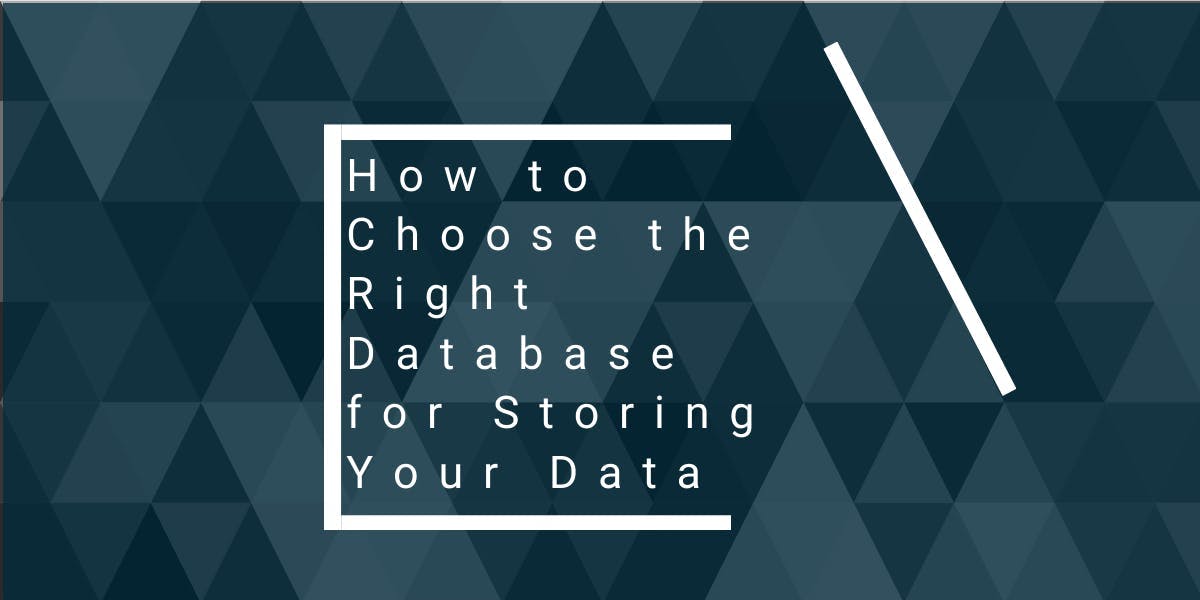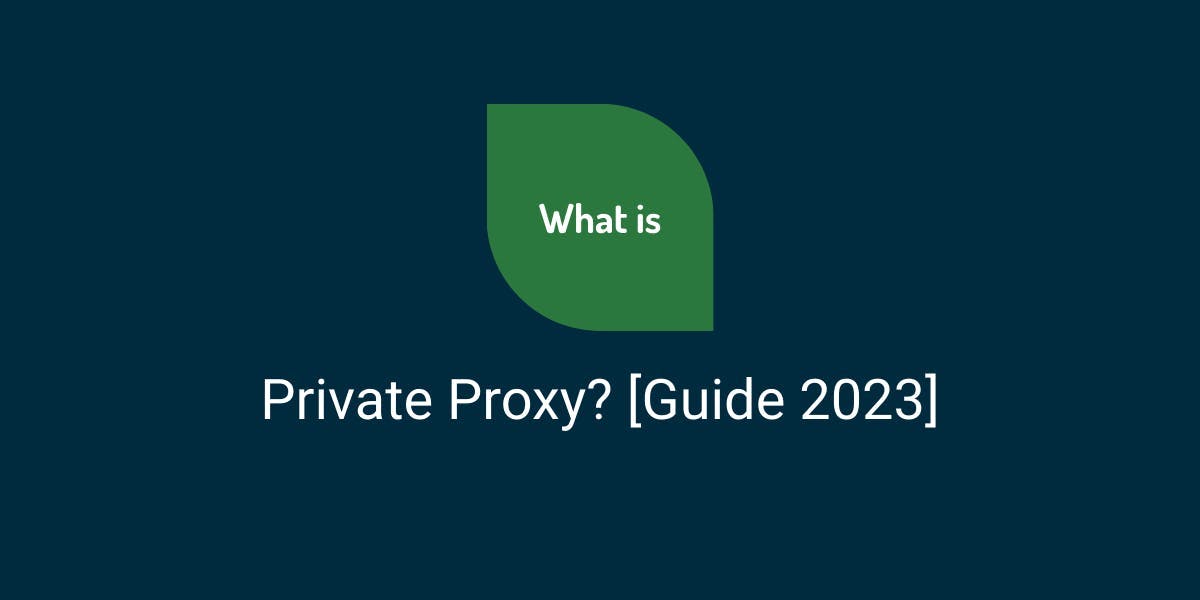How to Choose the Right Database for Storing Your Data
Flipnode on Jun 19 2023

Selecting the appropriate database for your projects can be a challenging task. It is a decision that requires careful consideration since it represents a long-term commitment. Making the wrong choice can lead to risky and costly procedures. In this article, we will explore different types of databases, examine their advantages and disadvantages, and address key factors to assist you in making the right choice for your needs.
Before delving into the details, let's establish some fundamental terminology that will aid in our discussion. Two significant terms to understand are relational and non-relational databases.
Non-relational databases
A non-relational database, also known as a NoSQL (Not Only SQL) database, is a type of database management system. What sets it apart is its departure from the traditional relational model for data organization. Non-relational databases feature flexible schemas and are designed to handle large volumes of structured and unstructured data. They excel in use cases that prioritize speed, scalability, and high performance. If you're interested in learning more about the distinction between structured and unstructured data, be sure to check out our article.
Relational databases
Relational databases, in contrast to non-relational databases, arrange data into tables composed of rows and columns. These tables are interconnected, ensuring that data elements have defined relationships. The advantage of utilizing relational databases is their straightforward and well-defined structure, which facilitates developers' handling of data. Additionally, relational databases are accessed and queried using structured query language (SQL), earning them the designation of SQL databases.
SQL and NoSQL databases
Although relational databases are often referred to as SQL databases, they are not synonymous. SQL is a programming language specifically designed for managing and manipulating relational databases. It provides a standardized method for interacting with relational databases, enabling users to define, manipulate, and query stored data. However, SQL itself is not a database.
On the other hand, NoSQL and non-relational databases are essentially the same thing. The term "NoSQL" stands for "Not Only SQL," indicating that these databases do not exclusively rely on traditional SQL for data management. NoSQL databases offer advantages where SQL may fall short. They can be a suitable choice when dealing with unstructured or semi-structured data at a large scale and with high speed. However, it's important to note that by choosing NoSQL, you sacrifice the convenience and standardized querying capabilities provided by SQL.
Types of NoSQL databases
When considering NoSQL databases, it's essential to explore the different types available, starting with key-value databases.
Key-value database
Key-value databases are commonly regarded as the simplest type of NoSQL database, offering great flexibility in data structure. These databases store data as key-value pairs, where each data value is associated with a unique key. When a specific key is requested, the corresponding data value is retrieved.
The simplicity of key-value databases contributes to their resilience, scalability, speed, and ability to handle high workloads. They excel at read-and-write operations, making them ideal for scenarios that require fast data retrieval and low-latency access.
Key-value databases are well-suited for systems that prioritize quick data access and straightforward querying. They are often used for caching, session management, user profiles, real-time analytics, and high-scale distributed systems, among other applications.
Column-Oriented databases
Column-oriented databases differ from row-oriented databases by focusing on organizing data based on columns rather than rows. However, the overall structure of these databases is not significantly different from row-oriented ones. A notable feature of column-oriented databases is that a single cell of a table row can contain multiple types of data related to a single object.
To illustrate, imagine you want to retrieve information about an employee in your company. By accessing the corresponding row in a column-oriented database, you would obtain a set of columns, each representing different attributes such as age, position, name, and so on.
The advantage of using a column-oriented database is the ability to easily locate information based on specific categories. For instance, if you want to find all employees in the company with the same position as the aforementioned employee, a single query in a column-oriented database would retrieve all the relevant results. In contrast, a row-oriented database would require scanning each row individually to locate the desired information. This makes column-oriented databases highly efficient for handling big data and real-time analytics scenarios.
Document-oriented databases
Document-oriented databases store data within documents, typically in formats like JSON or BSON (binary JSON). Each document can have a unique structure and contain fields of different types, making them independent and schema-less.
The key feature of document-oriented databases is their flexibility, as they allow for the storage of diverse document types within buckets or collections. This schema-less approach enables easy updates, changes, or removal of attributes without impacting the overall schema.
Software engineers often opt for document-oriented databases when scalability and flexibility are crucial. These databases are commonly used in applications such as content management systems, e-commerce platforms, and collaborative applications. They provide the necessary flexibility to handle varying data structures and are well-suited for scenarios that require adaptable data storage solutions.
Graph databases
Graph databases are designed with a fundamental concept of modeling data as interconnected nodes and edges. Nodes represent entities such as objects or people, while edges depict the relationships between them. The true strength of graph databases lies in their ability to traverse the graph structure efficiently. By following the connections between nodes, it becomes effortless to discover related information.
What distinguishes graph databases is their ability to eliminate the need for complex indexing and referencing, as the relationships between multiple entities are inherently captured within the graph. This unique feature enables graph databases to excel in various industries, including data intelligence, fraud detection, and applications involving AI and Machine Learning. The interconnected nature of graph databases provides powerful capabilities for analyzing relationships and uncovering insights in complex and interconnected datasets.
SQL’s ACID properties
After exploring the unique characteristics of NoSQL databases, let's now shift our focus to what sets SQL databases apart, and in doing so, we can examine the ACID (Atomicity, Consistency, Isolation, and Durability) properties.
It's important to note that these four properties collectively define a transaction. If a database operation adheres to these properties, it can be considered an ACID transaction, and the data storage systems that support such operations are known as transactional systems.
Let's delve into each ACID property individually. Atomicity ensures that each statement within a transaction is treated as a single, indivisible unit. Whether it involves deleting, writing, or updating data, all changes are either executed in their entirety or none at all. Atomicity helps prevent data loss and corruption that can occur due to partial updates.
Consistency ensures that transactions transition the database from one consistent state to another. Changes made to tables follow predefined rules, ensuring that the data remains in a valid and expected state. Consistency safeguards the overall integrity of the table, preventing errors from compromising its validity.
Isolation is implemented to prevent interference between concurrent transactions. Each transaction is executed in isolation, even if multiple users are reading or modifying the table simultaneously. This isolation prevents issues such as non-repeatable reads or phantom reads, ensuring the integrity and correctness of the data.
Durability is perhaps the most straightforward aspect of ACID. It guarantees that once a transaction is successfully executed, the changes made to the data are permanently saved. Even in the event of a failure, such as a system crash or power outage, the data remains intact and no information is lost.
The ACID properties provide a robust framework for ensuring data integrity, consistency, and reliability within SQL databases. These properties make SQL databases particularly suitable for applications where transactional guarantees and data reliability are critical.
SQL vs NoSQL databases
SQL and NoSQL databases offer distinct approaches to data storage and management.
SQL databases are relational, structured, and rely on predefined schemas. They excel in handling complex relationships and structured data, making them suitable for financial systems and enterprise applications.
NoSQL databases are flexible, schema-less, and scalable. They handle diverse data types, making them ideal for modern web applications and real-time analytics.
Choosing between SQL and NoSQL depends on specific project requirements. SQL ensures data integrity and complex querying, while NoSQL prioritizes scalability and performance. Projects may even benefit from a combination of both database types.
Benefits and limitations of NoSQL and SQL databases
Overall, the benefits and limitations of SQL and NoSQL databases can be summarized as follows:
Advantages of NoSQL:
- Scalability: NoSQL excels at horizontal scaling and distributing data across multiple nodes.
- Flexibility: NoSQL handles unstructured and semi-structured data without predefined schemas.
- High Performance: NoSQL databases optimize concurrent read/write operations and handle high loads efficiently.
Disadvantages of NoSQL:
- Limited joins and complex queries: Performing complex data analysis can be challenging compared to SQL.
- Lack of standardization: NoSQL lacks a universal query language and data model, making integration and switching between databases difficult.
- Eventual consistency: NoSQL prioritizes scalability and availability over consistency, potentially resulting in slow data propagation.
Advantages of SQL:
- Data integrity and constraints: SQL databases ensure data integrity with strict schemas and support for constraints like foreign and primary keys.
- Established ecosystem: SQL benefits from a mature tooling ecosystem, including development frameworks and ORMs, providing strong developer support.
- Standardized querying language: SQL simplifies advanced data analysis through joins, data manipulations, and aggregations.
Disadvantages of SQL:
- Vertical scalability: SQL databases primarily scale vertically and can be limited by the hardware capacity of a single server.
- Schema rigidity: Adapting to changing data requirements can be challenging with predefined schemas, requiring difficult and time-consuming schema migration.
- Impedance mismatch: Retrieving hierarchical data structures in SQL databases can be inefficient due to mapping challenges.
Consider these factors when choosing between SQL and NoSQL databases based on your project's specific needs and requirements.
Conclusion
After examining the features, advantages, and limitations of SQL and NoSQL databases, it is important to conduct thorough research based on your project's specific needs before making a decision. While conclusions have been drawn regarding the suitable use cases for each database, it is crucial to recognize that switching databases, even within the same type, is a complex task. Therefore, we highly recommend conducting in-depth analysis to understand the benefits each database offers and align them with your project requirements.



